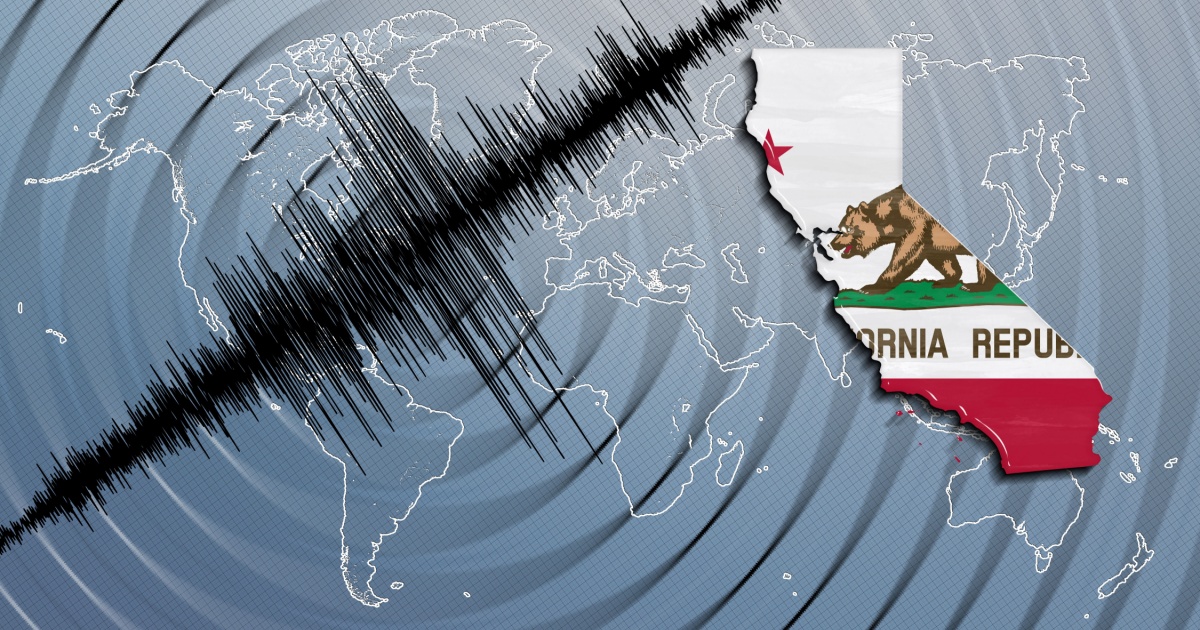New research suggests that California is (and has been) on the brink of a major earthquake – this time sooner than expected. Despite consistent warnings and (hopefully also) preparations, many Californians are not ready for any potential devastation a massive earthquake could bring. Glenn Pomeroy, CEO of the California Earthquake Authority (CEA), spoke about the lack of awareness regarding earthquakes among residents, “Because large earthquakes don’t happen very frequently, many people don’t think about them often or fully comprehend the risks.”1
Earthquake Cometh
A study conducted by geophysicists at Caltech and NASA’s Jet Propulsion Laboratory revealed findings regarding the state’s current tectonic landscape. The study followed the twin Ridgecrest earthquakes in July 2019 and identified 20 additional and previously undiscovered earthquake faults linked to the event. Zachary Ross, lead author of the study, cautioned against underestimating the potential threat posed from the lesser-known faults, “We can’t just assume that the largest faults dominate the seismic hazard if many smaller faults can link up to create these major quakes.”
The traditional belief has been that major earthquakes come from a rupture along one long fault, like the San Andreas Fault. But this new information from the Ridgecrest quakes has demonstrated a new, complex interplay between multiple faults at the same time, including the Garlock Fault. According to a study in the Bulletin of the Seismological Society of America, the events at Ridgecrest heightened the risk of a much more significant quake to happen along the Garlock Fault. Much more significant as in “roughly 100 times more likely to cause substantial damage”.
The connection between the Garlock and San Andreas Fault lines only raises concerns, as there is a significant portion of residents living in areas right next to or even on these fault lines. The study suggests a 50-50 chance that a Garlock quake anywhere within 30 miles of the San Andreas could trigger a quake along the entire Mojave segment of the San Andreas Fault. Despite the uncertainty, experts have emphasized the need for greater and more comprehensive preparedness measures in earthquake-prone regions.
Read More: Massive 450 Mile Wide Solid Metal Ball Forms Earth Inner Most Core, Scientists Discover
Exactly How Bad Is It?
The threat of a major earthquake, often dubbed by experts as “The Big One,” raises concerns about the state’s future. The Big One is classified as a quake of at least a 7.8 magnitude in the southern section of the San Andreas Fault. If this takes place, there would be catastrophic damage and loss to hundreds of thousands of Californians, potentially exceeding all previous seismic events.
Despite the ominous forecast, the majority of California’s population remains uninsured against any earthquake-related damages. Only about 14% of residents have insurance policies with earthquake coverage, which leaves 86% of all homeowners vulnerable to financial ruin in the event of The Big One.
Of course, this isn’t for no reason. Purchasing earthquake insurance is costly, with annual earthquake premiums averaging $727 for policies from the CEA and $874 from other insurers ($60-70 a month). Additionally, high deductibles are tacked onto the coverage, further deterring homeowners from investing in any kind of comprehensive coverage. Unfortunately, this means many will have to face significant financial burdens in the aftermath of a quake.
In light of these challenges, experts have advocated for proactive measures to at least prepare people for quakes and mitigate potential risks. Recommendations include earthquake drills, knowing how to secure household belongings, and exploring options for retrofitting programs like Earthquake Brace + Bolt.
Even with periodic spikes in preparedness efforts after seismic events, keeping long-term resilience efforts up is a formidable challenge. Jason Ballmann of the Southern California Earthquake Center emphasizes the need for ongoing preparedness, “Earthquakes don’t necessarily motivate people to get prepared in a long-lasting, resilient fashion.”
As the state braces for the looming threat of The Big One, the need for preparedness and public awareness has never been more critical. With seismic activity continuing to shape California’s landscape, being proactive is essential to saving lives and livelihoods in the face of imminent uncertainty.
Read More: China Is Digging A 10,000-Meter Hole Into The Earth To Reach The Cretaceous System
Sources
- “From Panic To Preparedness: The Big One California Earthquake!” Forbes. John Egan and Amy Danise. April 2, 2024.

